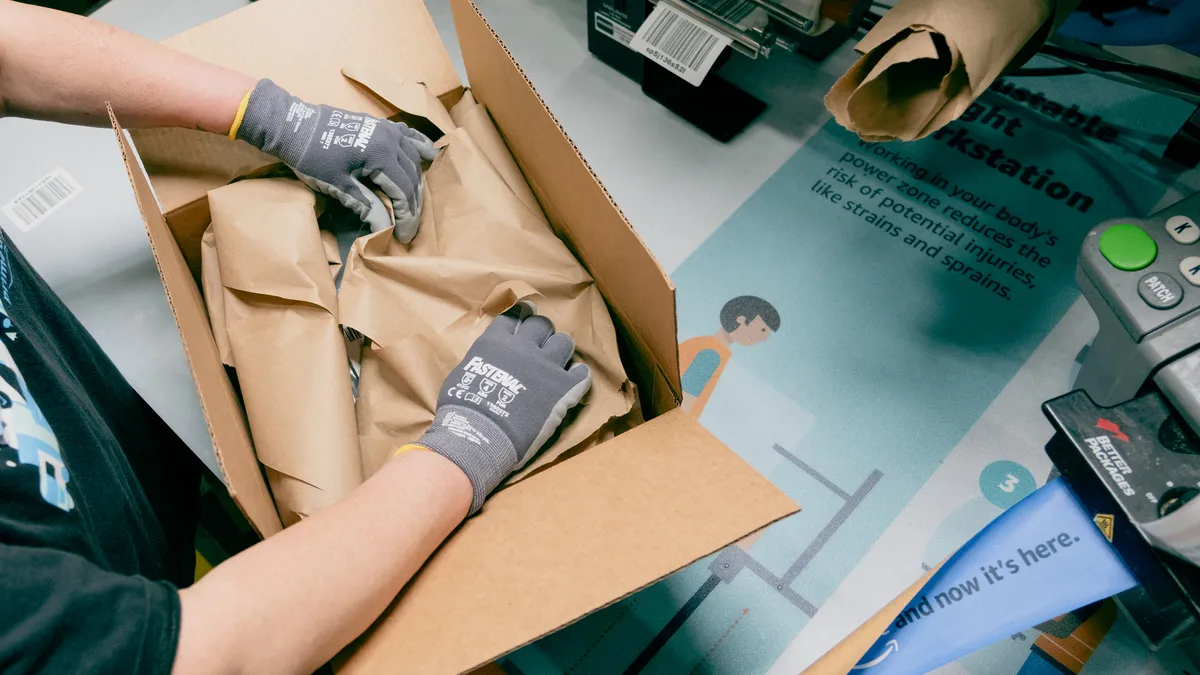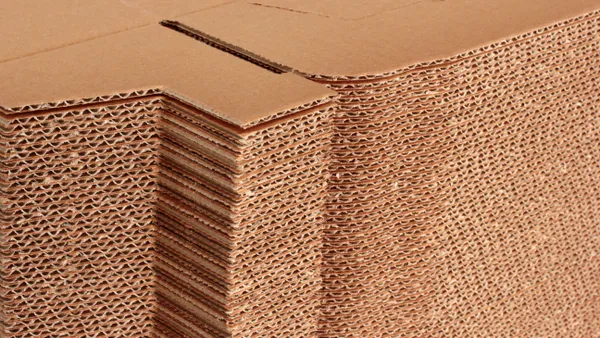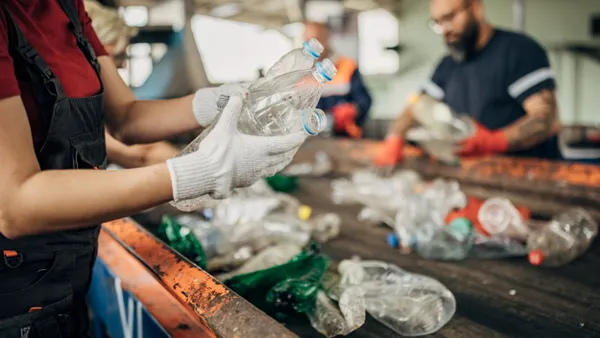Dive Brief:
- Amazon has nearly completed its multiyear effort to eliminate plastic air pillows from its delivery packaging in North America — its largest reduction in plastic packaging to date in the region, the company announced Thursday. It expects to complete the transition by the end-of-year holiday season.
- So far Amazon has replaced 95% of its air pillows with paper filler made entirely of recycled content that can be crumpled to provide cushioning. The paper filler can be recycled by consumers in curbside systems, it said.
- The change will avoid the use of 15 billion air pillows annually, Amazon said. It’s part of the company’s push to convert fulfillment centers to focus solely on paper.
Dive Insight:
Amazon reported that it decreased single-use plastic delivery packaging across its global operations by 11.6% in 2022. But it has still faced scrutiny and criticism over plastic waste generation and recycling limitations.
The air pillow announcement comes about eight months after Amazon shared that it converted an automated fulfillment center near Cleveland to use only recyclable paper packaging, with plans to incorporate lessons from there into more plastic-free fulfillment centers in the future.
“Results have been very encouraging so far” from the initial site, said Pat Lindner, vice president of mechatronics and sustainable packaging at Amazon. The company is embarking on getting customer and employee feedback to “make sure that we're ready to scale this fully throughout the network over the next few years.”
The shift required Amazon to ensure that the fiber materials perform very similarly to plastic, Lindner said. Paper needs to be able to survive all of the environmental conditions that a package might go through, like getting wet. Sealing paper is also different than sealing plastic.
Fulfillment center employees had to be trained on the internal packaging change as well. Stress Engineering Services began working with Amazon last August on testing. The idea was to ensure that the change “didn't result in more failures or damage that would negatively impact how the consumer feels about the products they receive from Amazon,” said Clint Haynes, senior vice president at SES.
Ultimately, the paper version offered “the same, if not better, protection to products than plastic air pillows,” Amazon said in its announcement.
In fact, “an air pillow for small loads acts more like a spring than it does an energy-absorbing material. You don't really want to spring, you want to absorb,” said Haynes. “We were able to show that you actually can get much better performance out of the paper than you can out of an air pillow.”
Derrick Meer, chief commercialization officer at SES, said most primary and secondary packaging was developed for retail store shelves and has not been adapted for e-commerce. Thus, it requires “a lot of this additional over-protection from e-commerce providers,” he said. “If we're really going to drive towards sustainability across the entire supply chain, a lot of the packaging needs to be rethought.”
The plastic air pillows phase-out applies only to boxed packages, as other formats don’t require this internal protective material, according to Amazon.
In 2022 in the U.S., Canada and certain EU regions, Amazon shipped 40% of its deliveries in corrugated boxes, which it considers to be the highest-waste format. Meanwhile, 11% of products shipped in their original packaging. The bulk of Amazon’s deliveries — 49% — shipped in flexibles, a category that includes paper bags, paper padded bags, paperboard envelopes, plastic bags and plastic padded bags. (Amazon did not specify proportions of each.) The company has been working to phase out padded bags containing plastics, a change that e-retail competitor Walmart also previously announced.
Amazon is expected to release its 2023 sustainability data this summer.















